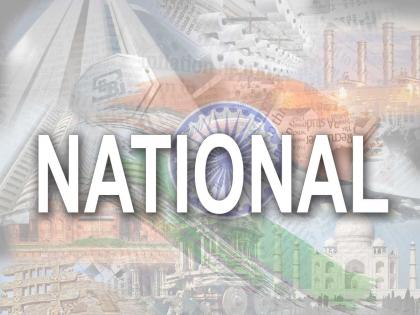SC took note of travelogues to cement Hindus' claim on Ayodhya land
By IANS | Published: November 9, 2019 08:42 PM2019-11-09T20:42:04+5:302019-11-09T20:50:04+5:30
The Supreme Court, in its judgement in the Ayodhya title suit, took note of travelogues of Joseph Tiefenthaler and William Finch regarding the history of the disputed site.

SC took note of travelogues to cement Hindus' claim on Ayodhya land
The top court, in its verdict, stated that the travelogues provide a detailed account both of the faith and belief of the Hindus based on the sanctity which they ascribed to the place of birth of Lord Ram and of the actual worship by the Hindus at the Janmasthan.
"Tieffenthaler and the account of Martin in the eighteenth century indicate the existence of the faith and belief of the Hindus that the disputed site was the birth-place of Lord Ram," the court noted.
These also also identify places that Hindus offered worship at, including 'Sita Rasoi', 'Swargdwar' and the 'Bedi' (cradle) - symbolising the birth of Lord Ram - in and around the disputed site.
The five-judge bench cited the "prevalence of the practice of worship by pilgrims at the disputed site including by parikrama (circumambulation) and the presence of large congregations of devotees on the occasion of religious festivals".
"There is historical presence of worshippers and the existence of worship at the disputed site even prior to the annexation of Oudh by the British and the construction of a brick-grill wall in 1857," it said.
Finch (1608-11) and Tieffenthaler who visited India between 1743-1785 provided an account of Ayodhya.
Conspicuous in both the accounts are references to worship of Lord Ram by the Hindus.
Tieffenthaler specifically refers to the 'Sita Rasoi', 'Swargdwar' and the 'Bedi', and his account describes religious festivals during the course of which Hindu devotees would throng these sites for worship.
His account in the eighteenth century is prior to the construction of the grill-brick wall in front of the mosque. Tieffenthaler refers to "a square box raised 5 inches above the ground with borders made of lime with the length of more than 5 ells (ells is a former English unit of length equal to 45 inches) and the maximum width of 4 ells", which the Hindus called the 'Bedi' or cradle.
This, as Tieffenthaler, notes, was the site of the house where Lord Vishnu was born in the form of the Lord Ram, and it was believed that either Aurangzeb or (according to others) Babur got the place razed.
Tieffenthaler, however, noted that in the place where the "native house of Lord Ram" existed, the Hindus circumambulate three times and lie prostrate on the floor. This account of Tieffenthaler refers to a focal point of worship namely the birth-place of Lord Ram around which worship took place and the "Hindus circumambulated and prostrated" (themselves)," it said.
( With inputs from IANS )
Open in app